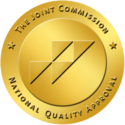The terms “binge drinking” and “alcoholism” are often used interchangeably, but it is important to understand the key differences. By understanding the signs and distinctions between these forms of drinking, individuals can protect themselves from the serious consequences of alcohol use disorder (AUD) and the potential need for treatment.
If you or a loved one is struggling with alcohol addiction, seek treatment at our Idaho rehab center. We want to help you start on the road to recovery.
Alcohol Misuse Statistics in Idaho

According to the National Institute of Alcohol Abuse and Alcoholism (NIAAA), more than 16 million adults in the United States suffer from an alcohol use disorder (AUD). Of those 16 million, about 6.2 percent of adults aged 18 and older reported binge drinking in the past month.
Binge drinking is a major problem in Idaho, with approximately 32.7% of adults engaging in the habit. This rate is higher than the national average of 29.2%. Binge drinking is more common among men than women in Idaho, with 39.7% of males participating compared to 26.3% of females.
Of individuals ages 18-25 in Idaho, 45% reported binge drinking in the past month, and 7.3% reported heavy alcohol use. Heavy alcohol use is defined as five or more drinks on one occasion for men, and four or more drinks on one occasion for women. Furthermore, 6 out of every 10 traffic fatalities in Idaho involved alcohol impairment in 2017.
Excessive drinking can lead to an increased risk for many health problems including cancer, liver disease, and cardiovascular disease. The annual economic cost associated with excessive drinking was estimated to be $622 million in Idaho alone for 2010. The majority of these costs were related to lost productivity due to early death or disability caused by alcohol-related diseases and conditions ($486 million).
Alcohol-attributable deaths (AADs) are an important indicator of the burden of excessive alcohol consumption on public health and safety. In 2014 there were 390 AADs in Idaho. This equates to roughly 30 deaths per 100 thousand people due to alcohol-attributable causes each year.
The effects of alcohol misuse can be devastating. Not only does it increase the risk of injury and car accidents, but it also increases the risk of long-term health problems such as liver cirrhosis and some cancers. It is crucial to seek alcohol addiction treatment if you begin to feel cravings or withdrawal symptoms.
How Much Alcohol Is Too Much?
The amount of alcohol someone can drink before it is considered too much varies from person to person. It is important to understand factors such as age, size, physical condition, and how quickly the alcohol is consumed.
Generally speaking, moderate drinking for adults typically falls within a range of 0-2 drinks per day for women and 0-3 drinks per day for men. Consuming more than these amounts can increase the risk of developing health problems.
What is Binge Drinking?
Binge drinking is the pattern of consuming large amounts of alcohol in a short period, usually over several hours or less. It typically involves drinking five or more drinks for men or four or more drinks for women in two hours. Binge drinking can increase the risk of health problems, accidents, and violence.
Excessive Drinking for Men and Women
Excessive drinking among men and women can have serious health consequences, including liver disease and heart problems.
Men are more likely to engage in binge drinking, defined as having five or more drinks within two hours, than women. Men are also more likely to drink heavily regularly than women.
Heavy drinking is defined as having 15 or more drinks per week for men and eight or more drinks per week for women. Additionally, alcohol consumption can lead to an increased risk of certain types of cancers in both men and women.
Heavy alcohol use has been linked to an increased risk of breast cancer in women and an increased risk of esophageal cancer in both sexes. Excessive drinking can also lead to accidents, risky behaviors such as driving under the influence, interpersonal violence, and other negative outcomes that affect entire communities.
Both men and women must drink responsibly and stay within low-risk drinking guidelines.
Who Binge Drinks?
The most common groups that engage in binge drinking are young adults aged 18-24, college students, and adults aged 25-34. Binge drinking is especially prevalent among college students due to the prevalence of alcohol on campus and at parties or social gatherings.
Young adults aged 18-24 may also drink excessively in response to peer pressure while adults aged 25-34 tend to drink heavily due to work-related stress or other personal issues.
Heavy drinking can have serious health consequences for individuals as well as society as a whole, so it is important to be aware of the risks associated with this behavior.
Binge Drinking Risks
The risks of binge drinking include an increased risk of accidents, alcohol poisoning, high blood pressure, liver disease, heart disease, stroke, and some types of cancer. Binge drinking can also lead to risky sexual behaviors that increase the likelihood of unintended pregnancy or sexually transmitted infections.
In addition, alcohol abuse is associated with co-occurring disorders such as depression and addiction. Long-term health effects from binge drinking may include memory loss and cognitive impairment.
What is an Alcohol Use Disorder (AUD)?
An alcohol use disorder (AUD) is a medical condition characterized by an unhealthy pattern of drinking that results in either physical or psychological harm. Symptoms include cravings for alcohol, inability to limit drinking, withdrawal symptoms when not drinking, and continued use despite negative consequences.
Binge Drinking vs. Alcoholism: The Main Differences
The main difference between alcoholism and binge drinking lies in the frequency with which someone engages in these activities. Alcoholism is typically characterized by frequent or daily alcohol consumption over a long period, while binge drinking usually involves infrequent episodes of excessive alcohol consumption in short periods.
While both can result in significant health risks, the cumulative effects are typically worse for those who suffer from alcoholism as compared to those who engage in binge drinking.
Alcoholism, or alcohol dependence, is a chronic condition that involves an uncontrollable urge to drink alcohol. People with alcoholism are not able to limit how much they drink and may need to increase their drinking to achieve the same level of intoxication.
Binge drinking, on the other hand, is defined as consuming five or more drinks within two hours for men, and four or more drinks within two hours for women. While those who engage in binge drinking are at risk of developing an addiction over time, it does not necessarily lead to alcoholism.
In terms of environment, alcoholism often takes place in the same setting and may be characterized by a person’s need to consume alcohol in any circumstance and environment. Binge drinking can take place anywhere including homes, bars, parties, etc.
Generally, binge drinking is more socially acceptable than alcoholism because it is not as frequent or consistent as other types of excessive alcohol use disorders. However, it is important to understand the dangers of drinking alcohol, no matter the circumstance.
The main difference in treatment for binge drinking and alcoholism is that alcoholism is considered a chronic medical condition, while binge drinking is seen as a behavior pattern.
Alcoholism treatment typically involves group or individual therapy, 12-step programs, and medication. In some cases, medications such as Naltrexone may be used to reduce cravings and help prevent relapse.
Binge drinking is often treated through lifestyle changes such as healthier eating habits, more exercise, and avoiding situations that may trigger excessive drinking.
Alcohol And Your Health: Risks of Incessant Alcohol Use
The risks of incessant alcohol use include increased chances of developing certain types of cancer such as mouth, throat, esophageal, liver, and colorectal cancers.
In addition, excessive alcohol consumption can lead to high blood pressure, stroke, heart disease, digestive problems, a weakened immune system, liver cirrhosis, and an increased risk of accidents and injuries.
Heavy drinking can also affect mental health leading to depression and anxiety. Long-term use of alcohol can cause changes in brain structure which may lead to memory loss and difficulty with concentration. It can also increase the risk of suicide.
Seek Proper Treatment for Alcohol Addiction at Eagle Creek

We also offer family therapy to help those close to the individual understand addiction and gain coping skills to support the recovery process. In addition, we provide individual counseling for clients to explore triggers, develop coping strategies, learn how to set healthy boundaries, and address underlying issues that lead to substance abuse.
Our team of clinicians offers group therapy sessions focused on relapse prevention, trauma processing, mindfulness practices, and emotional regulation skills as well as providing education about addiction. Contact us today if you or a loved one could benefit from our services!

Clinical Director
Kendall Maloof is the clinical director at Eagle Creek Ranch Recovery. She is a licensed marriage and family therapist and has held multiple leadership roles before settling here at Eagle Creek. Kendall received her master’s degree in marriage and family therapy from the Chicago School of Professional Psychology in 2016. Her career in mental and behavioral health began in 2014 when she took up internships in both the nonprofit and for profit sectors. She interned at multiple reputable companies, such as The Living Success Center and 449 Recovery in California.
In 2019, Kendall became the clinical director of Sunsets Recovery for Woman, a dual diagnosis program in southern California. Kendall is a natural leader. She has an incredible ability to problem solve and stay calm in any situation. Kendall never fails to show up when she is needed, and her calm demeanor makes her team and clients feel at ease. Eagle Creek Ranch Recovery is proud to have Kendall as our clinical director.



